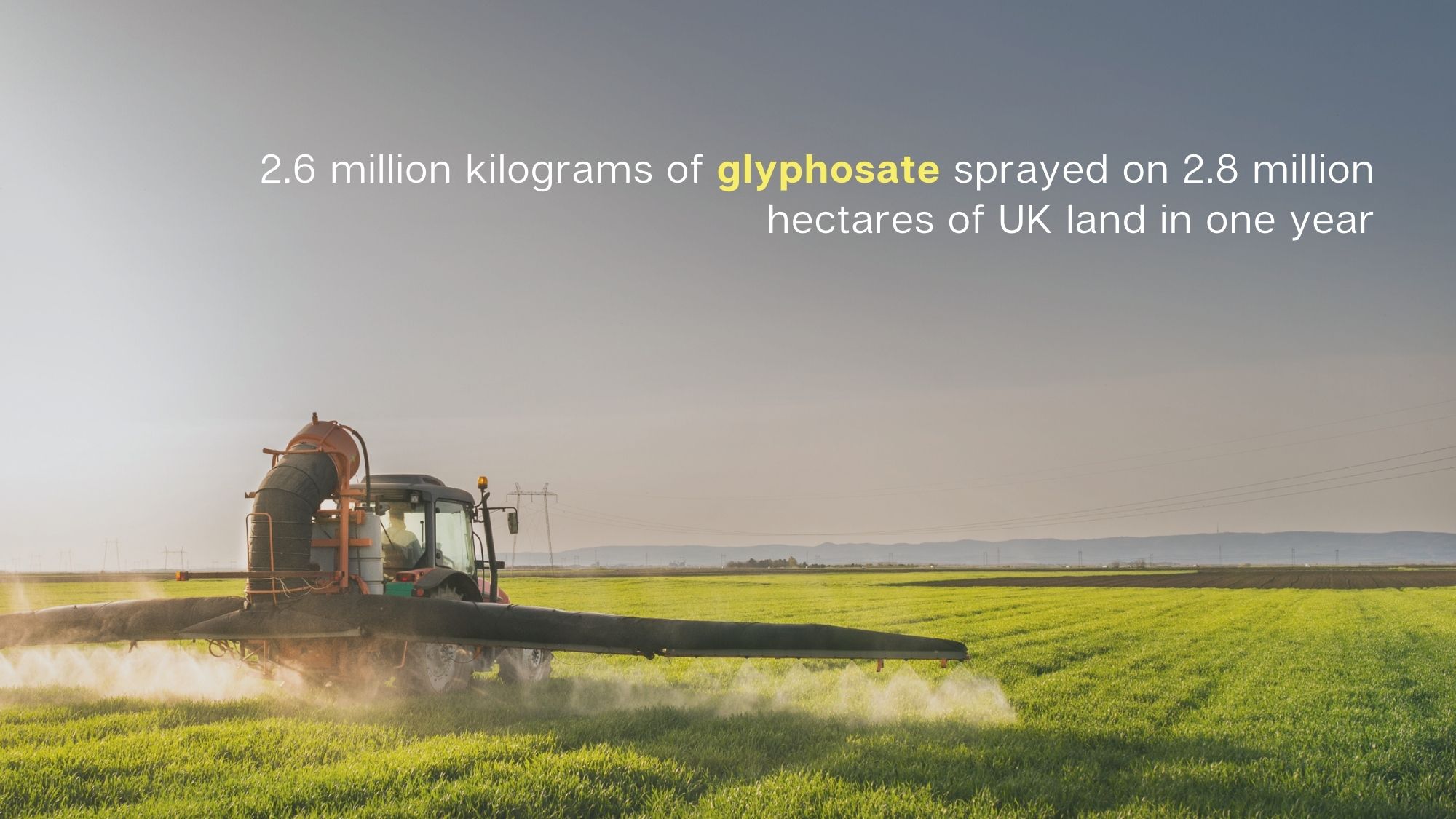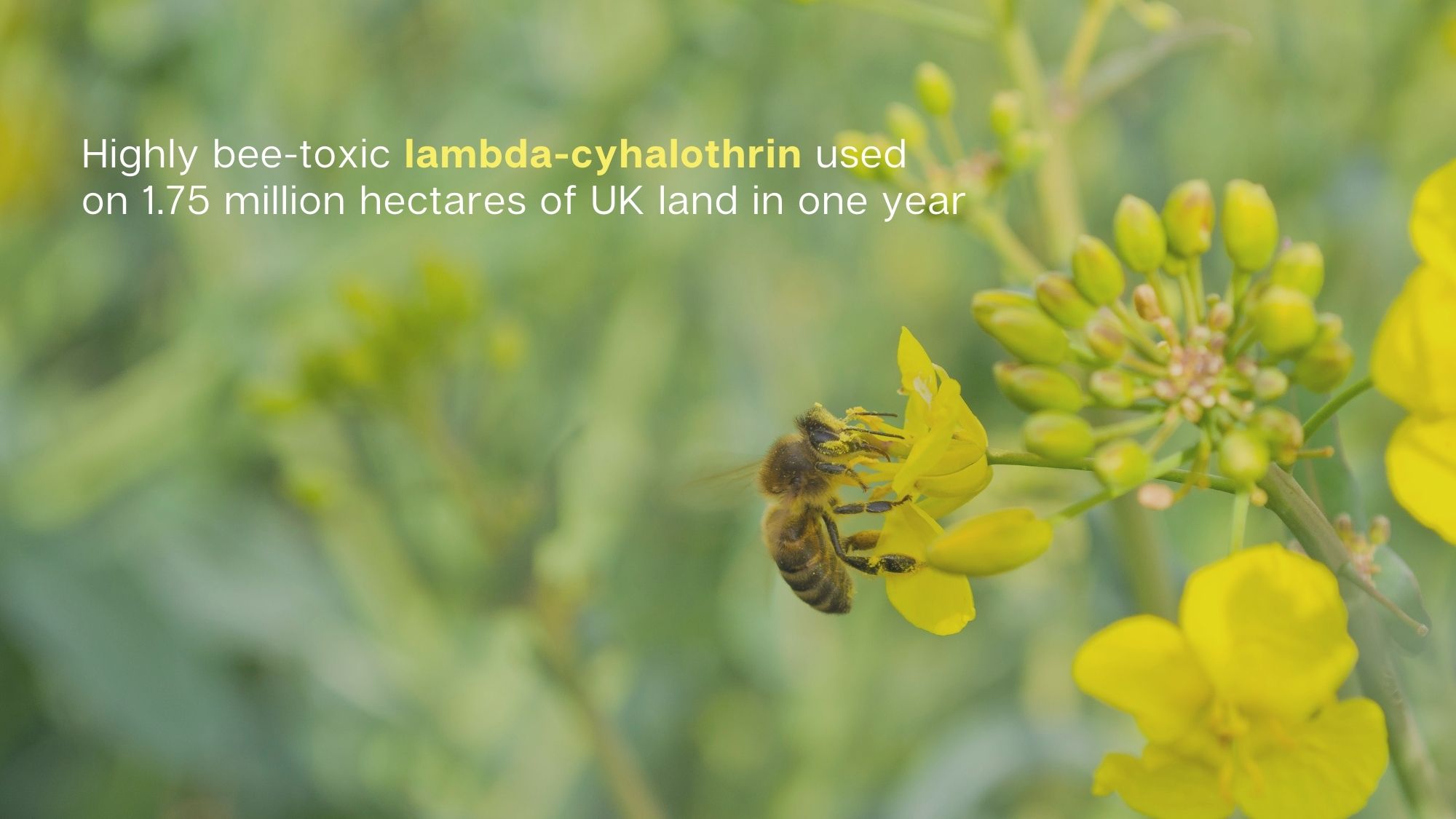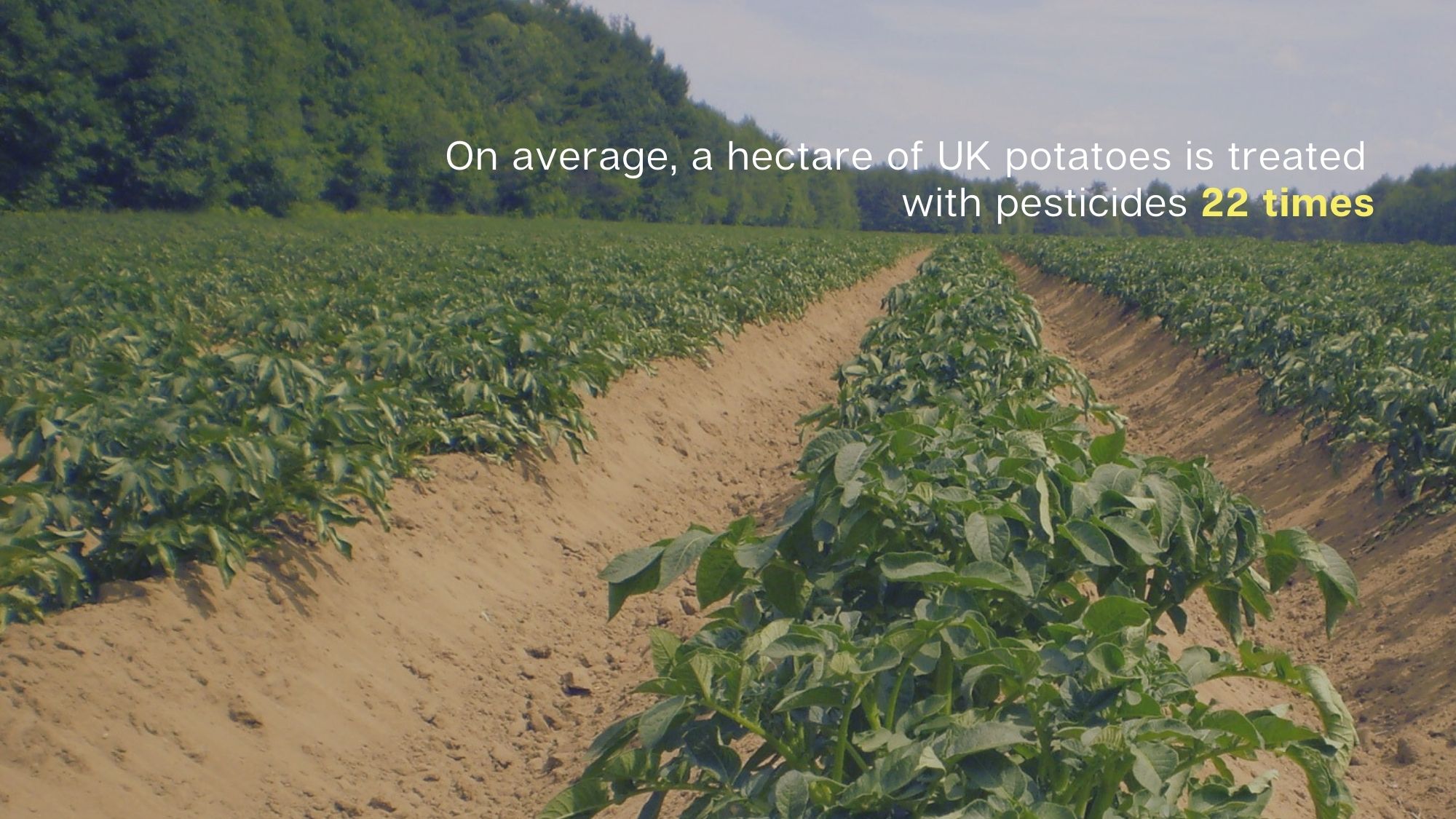Pesticide use in the UK
In order to be able to design effective policy and actions that drive a reduction in pesticide-related harms it is vital to understand how pesticides are currently being used in the UK, in what quantities and where.
The UK Government publishes pesticide usage data and, while it is flawed in many ways, it is the only publicly-accessible information providing any kind of picture of UK pesticide use. With the aim of helping people to understand what’s happening with pesticides, we have analysed UK Government official usage data from 2016 to 2020 (the most recent data available at time of writing in 2023). It has been impossible to conduct this analysis before now, because – until 2022 – the UK Government had failed to update pesticide usage data beyond 2016.
Here is a summary of our key findings regarding UK pesticide use between 2016 and 2020:
- There have generally been small decreases in the weight of pesticides being applied, the area of land being treated with pesticides and the average number of times key crops are treated in a growing season. However, the rate or intensity at which pesticides are being applied (i.e. the average kilogram of pesticide used per hectare of land) has largely remained the same.
- Glyphosate use has increased, both in terms of weight applied and land area treated.
- The use of a number of other Highly Hazardous Pesticides (HHPs) has also increased, including:
- Cyantraniliprole (highly toxic to bees)
- 2,4-D (carcinogen and suspected endocrine disruptor)
- Imazalil (carcinogen and developmental or reproductive toxin)
- The three neonicotinoids that were banned in 2018 have not been replaced by a return to pyrethroids (their predecessor). The use of an alternative neonicotinoid, acetamiprid, has increased considerably. Acetamiprid is moderately toxic to bees.
PAN UK is calling on the UK Government to urgently:
- Improve pesticide usage monitoring and data
- Increase support for farmers to reduce pesticide use and utilise non-chemical alternatives
- End the use of pesticides that harm bees and other pollinators
- Introduce pesticide reduction targets designed to drive a decrease in both use and toxicity
“While it is heartening to see overall pesticide use falling, a closer look at the figures reveals that intensity has stayed fairly static. This means that humans and wildlife living in and around conventional farms are likely to be exposed to a similar toxic load. With the clock ticking on the biodiversity crisis, and the UK already one of the most nature-depleted countries in the world, we must move further and faster. Absolutely key is supporting farmers to transition away from chemical dependence and towards more nature-friendly methods of production”.
Nick Mole, Policy Officer, PAN UK
This briefing builds on PAN UK’s 2018 report The Hidden Rise of UK Pesticide Use which analysed UK Government usage data from 1990 to 2016. The 2018 report revealed that, while the overall weight of pesticides being used had halved between 1990 and 2016, the toxicity of the chemicals, the area of land treated with pesticides and the number of times key crops were treated had all increased. Download the 2018 report here.



